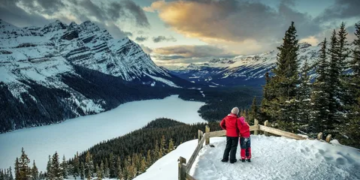Powwows are vibrant celebrations of Indigenous culture, where communities come together to honor traditions, share stories, and celebrate their heritage through music, dance, and ceremony. In Canada, powwows hold a special significance as they provide a platform for First Nations peoples to showcase their rich cultural heritage and foster a sense of unity among diverse Indigenous communities. Explore Canada’s First Nations Culture at a Powwow
Understanding Canada’s First Nations
To truly appreciate the essence of a powwow, it’s essential to understand the history and culture of Canada’s First Nations. First Nations refers to the Indigenous peoples of Canada, encompassing a diverse range of cultures, languages, and traditions. These communities have inhabited the land for thousands of years, each with its own unique customs and way of life.
The Significance of Powwows in First Nations Culture

Powwows serve as important cultural gatherings where First Nations people come together to celebrate their identity, reconnect with their roots, and pass down traditions to future generations. These events play a vital role in preserving Indigenous culture and fostering a sense of pride and belonging among community members.
The History of Powwows in Canada
The history of powwows in Canada dates back centuries, with roots in Indigenous spiritual and social gatherings. While the specifics vary among different First Nations groups, the overarching purpose of powwows has always been to celebrate and honor cultural heritage through music, dance, and ceremony.
Traditional Elements of a Powwow

At the heart of every powwow are traditional elements that reflect the cultural identity of the participating First Nations communities. These include sacred rituals, such as the Grand Entry and the honoring of veterans, as well as the presence of traditional crafts, artwork, and cuisine.
Dance Styles: A Vibrant Expression of Heritage
Dance is a central aspect of powwows, with various styles representing different aspects of Indigenous culture and history. From the graceful movements of the Women’s Fancy Shawl Dance to the powerful athleticism of the Men’s Grass Dance, each dance style tells its own story and pays homage to the resilience and strength of First Nations peoples.
Drumming and Singing: Heartbeat of the Powwow

Drumming and singing are integral components of powwows, providing the rhythmic heartbeat that guides dancers and participants throughout the event. The drum, often referred to as the “heartbeat of Mother Earth,” symbolizes the interconnectedness of all living beings and serves as a unifying force within the powwow circle.
Regalia: Intricate Symbols of Identity
Regalia, or traditional attire, is another essential aspect of powwows, with each piece carrying deep cultural and spiritual significance. From intricately beaded moccasins to elaborately feathered headdresses, regalia serves as a visual expression of identity, heritage, and individuality.
Sharing Stories: Oral Tradition at Powwows

Powwows provide a platform for the sharing of stories, songs, and oral histories, allowing community members to preserve and transmit their cultural heritage to future generations. Through storytelling, elders impart wisdom, lessons, and teachings that have been passed down through countless generations.
Food and Hospitality: Nourishing the Community Spirit
Food plays a central role in powwows, serving as a symbol of hospitality and community spirit. Traditional dishes such as fry bread, wild rice, and buffalo stew are often shared among attendees, fostering a sense of unity and camaraderie among participants.
Modern-Day Powwows: Adapting Tradition for Today

While rooted in tradition, modern-day powwows have also evolved to reflect the changing realities of Indigenous communities. Contemporary powwows may incorporate elements of urban Indigenous culture, such as hip-hop and graffiti art, alongside traditional ceremonies and practices.
Attending a Powwow: Etiquette and Respect
For those attending a powwow for the first time, it’s essential to approach the event with respect and humility. Observing proper etiquette, such as asking permission before taking photographs and refraining from interrupting sacred ceremonies, demonstrates a sincere appreciation for Indigenous culture and traditions.
Embracing Cultural Diversity through Powwows

In powwows offer a unique opportunity to learn, celebrate, and honor the diverse cultures and traditions of Canada’s First Nations peoples. By participating in these vibrant cultural events, individuals can gain a deeper understanding of Indigenous heritage and contribute to the ongoing preservation and revitalization of Indigenous culture for generations to come.
Click here for more visited Posts!








































Discussion about this post